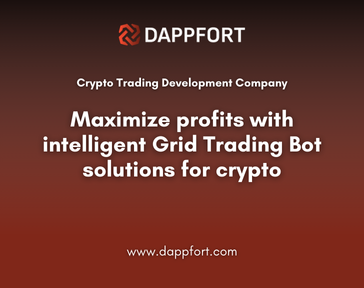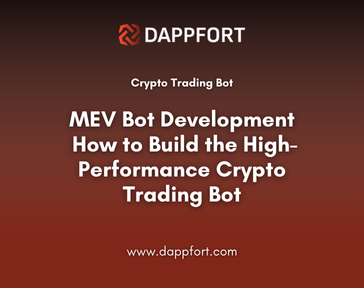
Table of Contents
In today’s fast-paced financial world, the demand for algorithmic trading apps is at an all-time high. A comprehensive guide to algo trading software development can help you understand how to build high-performance trading applications. The development of an effective algo trading software strategy involves leveraging historical data, backtesting, and defining financial goals.
To build a robust algo trading app development strategy, it is essential to have a strong understanding of programming languages such as Python, C++, Java, and R. These languages enable developers to create efficient algorithms, manage data, and fine-tune strategies for optimized trading.
By mastering the process of developing an algo trading app development strategy, traders can trade at a higher frequency, making quick and informed decisions. With the right expertise, you can craft a bug-free, powerful trading solution to stay competitive in the financial markets.
Let us explore…
What is Algorithmic Trading Software?
Algorithmic trading software or algo trading is a special program that allows traders and financial institutions to automatically act using predetermined strategies and algorithms. The software analyzes market conditions and determines real-time without the need for human participation.
This type of software enables faster and more accurate trading by conducting high-frequency trades in fractions of a second, which humans would be unable to imitate. Algorithmic trading optimizes parameters such as timing, price, and quantity, making it a highly effective way to trade in a variety of financial markets, including stocks, forex, and cryptocurrency.
How Does Algorithmic Trading Software Work?
Algorithmic trading software works by automatically executing trades based on predefined rules and strategies. It collects real-time market data, such as prices and trading volumes, and analyzes it using algorithms programmed with specific criteria. When the algo trading software detects opportunities that match the strategy (like price movements or technical signals), it automatically places buy or sell orders without human intervention.
Algo trading software also helps manage risk by setting stop-loss or take-profit levels, and it can adjust its actions based on changing market conditions. The main advantage is speed — it can execute trades in milliseconds, allowing traders to capitalize on opportunities much faster than if they were trading manually. This automation makes trading more efficient, reduces human error, and ensures quick decision-making, even during fast market fluctuations.

🚀 Ready to Build Your Own Algo Trading Software?
Start high-performance algo trading software development with expert guidance today! 💻💡
Algo Trading Software Development
Algo trading software development involves creating automated platforms for trading financial assets using algorithm-driven strategies. This process covers everything from design to deployment, including building high-performance trading engines, integrating advanced algorithms, and ensuring robust security protocols for a seamless user experience. With the rise in demand for data-driven trading and high-frequency trading, algo trading software has become essential.
Dappfort, a leading algo trading software development company, delivers secure, scalable, and feature-rich platforms tailored to client needs. Our developers follow a step-by-step approach, including strategy design, algorithm development, backtesting, rigorous testing, and final deployment, ensuring fast, reliable, and efficient automated trading solutions.
Key Features of Algo Trading Software
Let us take a closer look at the key features of Algo Trading app development. These elements are critical to creating a successful and effective Algo trading platform.
Automation and Accuracy
One of the biggest advantages of algorithmic or algo trading software is its ability to execute trades automatically without human intervention. Once a set of trading rules is programmed, the algorithmic trading software will make decisions and execute orders based on market conditions, ensuring consistency and eliminating emotional decision-making.
High-Speed Execution
Speed is critical in financial markets. Algo trading apps can process massive amounts of data and execute trades in milliseconds, ensuring that users capitalize on market opportunities in real time.
Data-Driven Insights
The strength of Algo trading mobile app development lies in its ability to analyze historical data, trends, and market sentiment. These insights are crucial for making informed trading decisions, optimizing strategies, and maximizing profits.
Consistent Performance
Human traders often make impulsive decisions based on emotions. In contrast, algo trading software follows a set strategy, making decisions based on data and removing emotion from the equation. This results in more consistent performance over time.
Multiple Trading Strategies
Algo trading apps can incorporate various strategies, including arbitrage, trend following, and market making, allowing traders to choose approaches that best suit their objectives.
Popular Types of Algorithmic Trading Strategies
Popular types of algorithm trading strategies are designed to automate the buying and sales process based on specific market conditions. Here are the various types of algo trading strategies. They are:
Current Trend-Following Strategies
These strategies identify market trends and execute trades that align with the trend. Algo trading software can automate the process of buying or selling based on real-time price movements, maximizing gains during uptrends and downtrends.
Mean Reversion
This Algo trading strategy assumes that asset prices will eventually revert to their historical average. The algorithm will identify when an asset is undervalued or overvalued, and execute buy or sell orders accordingly.
Arbitrage Trading
Arbitrage trading strategies exploit price differences between different exchanges or markets. Algo trading apps can automatically buy an asset at a lower price on one exchange and sell it at a higher price on another, earning a profit from the price discrepancy.
Sentiment Analysis
Advanced algo trading software can analyze news, social media, and market sentiment to inform trading decisions. By evaluating how news and public perception impact asset prices, traders can make better-informed choices.
Index Fund Rebalancing
Algo trading apps often use rebalancing strategies at specific intervals to maintain alignment with benchmark indexes. The objective is to adjust the composition of the index funds, ensuring their performance is consistent with market benchmarks.
Mathematical Model-Based Strategies
The delta-neutral approach is a mathematical model-based strategy used in algo trading. It involves managing positions to maintain a neutral delta, balancing out both positive and negative positions, reducing risk while capturing market opportunities.
Range Trading
Range trading algorithms are based on the concept that asset prices tend to revert to their average over time. This strategy relies on the belief that prices fluctuate within a set range, and the algorithm capitalizes on these price movements by buying at the low end and selling at the high end of the range.
Volume-Weighted Average Price (VWAP)
VWAP is a strategy that divides large orders into smaller parts based on historical trading volume patterns. The algorithm releases these smaller orders throughout the trading day, helping to minimize the impact on the market while achieving a better price average.
Time-Weighted Average Price (TWAP)
TWAP is a strategy designed to spread large orders over a specific time period. By executing trades at evenly spaced intervals, this technique reduces market impact, allowing the trader to reach an average price closer to the overall market price during the set time frame.
Percentage of Volume (POV)
The POV strategy adapts trading to the market’s volume by calculating the percentage of the total trading volume a trader wants to execute. This strategy ensures that orders are placed at a rate proportional to market activity, helping to avoid large price fluctuations.
Implementation Shortfall
This strategy focuses on minimizing the gap between a trader’s decision and the execution of that order. The goal is to reduce the impact of market movements between the time an order is placed and when it is executed, ensuring that traders avoid significant losses due to unfavorable price changes during that window.

💼 Unlock the Power of Automated Algo Trading!
Get custom-built algo trading software tailored to your needs. Start now and maximize profits📈💰
Advantages of Algo Trading Software Development
Algo Trading software development offers a wide range of benefits, making it a valuable solution for traders and financial institutions. Here are the key advantages:
Cost Reduction
Automating trading strategies with algorithms reduces transaction costs and streamlines execution. Traders can use their capital more efficiently, minimizing overhead expenses.
Enhanced Precision
Algo trading software development minimizes human errors that can occur during manual trading, ensuring accurate execution of trades and optimal performance.
Scalability
Algo trading allows traders to scale up their operations by managing multiple trades across various markets simultaneously. This opens up opportunities for more aggressive trading strategies with reduced risk.
24/7 Market Access
Since algorithms can run continuously, traders can tap into global markets around the clock, taking advantage of opportunities that arise outside normal market hours.
Challenges and Risks in Algorithmic Trading
Technical Failures
Even the best algorithmic trading can fail due to bugs, connectivity issues, or other technical glitches. Regular maintenance and robust testing are essential for minimizing downtime and preventing losses.
Market Impact
Large trades executed by algorithms can move market prices, especially in less liquid markets. This can lead to slippage and unintended consequences.
Overfitting
Algorithms designed based on historical data may not always predict future performance accurately. Testing and validation are essential to ensure that your algorithm remains effective under changing market conditions.
Choosing the Right Trading Platform for Algorithmic Trading
In algorithmic trading, choosing the right trading platform is crucial. It enables traders to execute their strategies efficiently while monitoring market conditions in real-time. These Algo trading platforms can be accessed via mobile apps, desktop applications, or web-based interfaces, depending on user preferences and needs.
There are primarily two types of trading platforms for algorithmic trading:
Commercial Trading Platforms
These trading platforms offer a range of features for casual traders, such as stock alerts, newsfeeds, and easy-to-use tools. Examples include Robinhood and Binance.
Custom Trading Platforms for Advanced Traders
Custom-developed platforms are tailored to specific needs and offer advanced features for professional traders. These trading platforms are often used by banks and financial institutions.

⚡ Supercharge Your Algo Trading Software Development!
Create fast, efficient, and data-driven algo trading software with our expert development team. Let’s build your future! 🏦🔧
Algorithmic Trading Software Development Process: A Step-by-Step Approach
A comprehensive and structured approach to top-tier Algo trading software development, ensuring efficiency, security, and scalability to meet the demands of your trading strategies. The end-to-end Algo trading app development process covers everything from algo trading strategy design to deployment:
Step 1: Define Your Trading Platform
The first step in Algo Trading Software development is to define the platform where the algorithm will operate. Will you build your own custom platform, or will you utilize existing APIs? Platforms such as MetaTrader, NinjaTrader, and TradingView can be used to connect your algorithm to the exchanges.
You can either:
Develop from Scratch: Create a completely custom algorithmic trading software with tailored features and flexibility.
Integrate with Existing Solutions: Use established APIs and platforms like Backtrader or QuantConnect to build your trading bot.
Step 2: Develop a Trading Algorithm
The core of any Algo Trading Software is the algorithm itself. It is crucial to Algo trading software development strategy that uses mathematical models to generate trading signals based on real-time data. Whether you are utilizing trend-following, mean reversion, or arbitrage, the algorithm should be built to match your trading goals.
The programming languages commonly used for this are Python, C++, Java, and R, which allow for efficient data processing and backtesting.
Step 3: Select Time Frames and Trading Frequency
Determine the time frame (short-term or long-term) and frequency of trades (high-frequency or low-frequency). This will influence your algorithm trading software design and help you set realistic expectations for performance.
Step 4: Test with Historical Data
Before deploying your Algo Trading Software, backtest it using historical data. This allows you to assess the strategy’s performance and make adjustments to improve profitability. You can use a demo account to simulate real-time market conditions and analyze your algorithm’s performance without risking actual funds.
Step 5: Paper Trading
Once the backtesting phase is complete, test the algorithm using a demo or paper trading account. This lets you simulate real-world conditions and ensure that your trading bot functions correctly in live market environments.
Step 6: Go Live
After ensuring the algorithm’s reliability through testing, you can finally deploy it with real funds. However, always monitor the performance to ensure that it is operating as expected and is not causing unexpected market impacts.
Hire Our Expert Developers and Take Your Algo Trading Software to New Heights!
Dappfort, a leading crypto trading bot development company, specializes in building high-performance algorithmic trading software tailored to your business needs. Our expert developers craft automated, data-driven, and high-speed trading solutions that enhance efficiency, minimize risks, and maximize profits.
With advanced AI and ML integration, our custom algo trading software ensures real-time market analysis, seamless execution, and optimized trading strategies—helping you stay ahead in the competitive crypto landscape.
✅ Custom AI & ML-Based Trading Algorithms
✅ High-Frequency & Low-Latency Trading Solutions
✅ Real-Time Market Data Analysis & Execution
✅ Backtesting & Strategy Optimization
✅ Secure & Scalable Trading Infrastructure
Supercharge your trading with expert-driven algorithmic solutions! Get in touch with us today!



